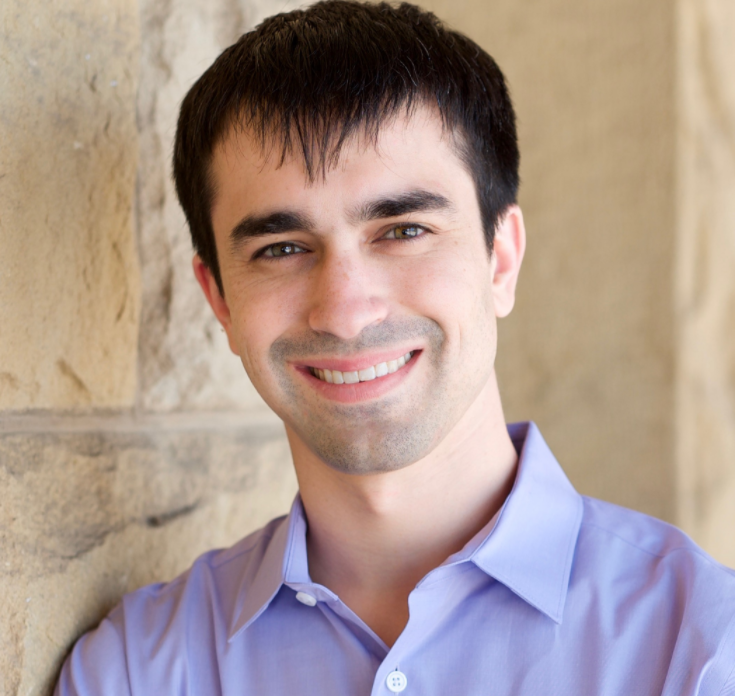
As a graduate student in Shaoyi Jiang's lab in the Department of Chemical Engineering, Yanjiao studied the application of zwitterionic polymers in cell culture and regulation of synthetic biology. Since graduating in 2020, she moved to Boston to pursue employment in the private sector. Read More

As a graduate student in Elizabeth Nance's lab in the department of chemical engineering, Mengying studied how quantum dots – fluorescent nanoparticles capable of capturing the movement of cells – behave in the brain. By characterizing the stability and toxicity of quantum dots in a biological setting, Mengying supported the development of quantum dots as brain-imaging tools and drug delivery carriers that they may be used to detect and treat brain diseases. She served in a variety of roles in Engage, a program at the University of Washington designed to help graduate students build their science communication skills. Read More

As a graduate student in the labs of James Carothers and Jesse Zalatan, Jason developed CRISPR-Cas tools that facilitate genetic engineering in bacteria to optimize biosynthesis of valuable products. He also served as a general board member of the Student and Post-Doc Association (SPA) of the Engineering Biology Research Consortium, a public-private partnership that focuses on advancing engineering biology to address national and global needs. After completing his Ph.D. in 2020, Jason stayed on as a postdoc in the Carothers lab, focusing on advancing technologies developed during his graduate work. Read More

As a graduate student in the lab of chemical engineering professor Vince Holmberg, Grant worked on developing new materials for high-capacity lithium-ion and sodium-ion batteries that can charge faster and last longer. His research focused on characterizing battery materials made of antimony, which can charge from empty to full in three minutes and store roughly double the energy of current battery materials. While at UW, Grant received an NSF Graduate Research Fellowship, was named to the Husky 100 and served in the Graduate & Professional Student Senate. Read More

Our group tackles emerging challenges in water, energy, and sustainability using nanomaterials. Through the design of ultrathin nanostructures and coatings, we create membranes that can separate contaminants from water, catalysts that drive difficult chemical reactions, and materials enable the formation of previously unobtainable device architectures. We combine atomically-precise synthesis, advanced characterization approaches, and data science tools to better understand the behavior of molecules in these uniquely small systems and use that understanding to invent scalable processes that can enable the deployment of clean-energy technologies. Read More

Phuong is a Ph.D. student performing her graduate research in the lab of Elizabeth Nance in the Department of Chemical Engineering. Her research focuses on characterizing and investigating the role of brain-derived extracellular vesicles in injury response in neonatal ischemia models. Extracellular vesicles are membrane-bound vesicles that have emerged as a new pathway of cellular communication and a valuable source for injury stage-specific information and as fingerprints of injury progression. They have become an exciting new research thrust in therapeutics due to their intrinsic capability to carry active biomolecules, endogenous bioavailability, and biocompatibility. Read More

As a graduate student in Hugh Hillhouse’s research group, Yuhuan is investigating bismuth rudorffites, a promising new material for the top cell in solution-processed tandem perovskites. These lead-free wide bandgap semiconductors could potentially serve as a high-performance alternative to the lead-based materials in hybrid perovskite solar cells currently used to increase the power conversion efficiency of solar cells while lowering their overall cost. A deeper understanding of bismuth rudorffites could enable the development of low-cost tandem solar cells from non-toxic elements. Read More

As a graduate student in the lab of Dr. Baneyx in the department of chemical engineering, Jinrong developed hierarchical hybrid architectures comprising peptoids, proteins, and inorganics. Using sequence-defined peptoids as scaffolding blocks and solid-binding proteins as functional blocks, Jinrong we synthesized a variety of hybrid hierarchical nanostructures that take advantage of the excellent programmability of peptoids, and of the ability of structurally organized solid-binding proteins to control the binding, nucleation, and growth of various inorganic components. Jinrong graduated in 2022 and he is now a senior associate scientist in 23andMe working on the development of novel therapeutic antibodies. Read More

As a graduate student in the labs of chemical engineering professor James Carothers and chemistry professor Jesse Zalatan, Ice is developing CRISPR-based transcriptional activation methods in multiple bacteria to apply in industrial biotechnological applications. He previously worked as a researcher at Vidyasirimedhi Institute of Science and Technology (VISTEC) in Thailand developing biocatalytic systems for chemical synthesis from food/agricultural wastes. Ice holds a B.S. and M.S. in Chemistry from Mahidol University, Thailand. Read More

Kacper carried out research in Professor Lilo Pozzo’s lab in which he applied experiment automation and small-angle scattering techniques to study the self-assembly of a variety of colloidal systems. He is interested in continuing to learn about statistical design of experiments and applying his experiences in process engineering or formulation science positions in the Seattle area. Read More